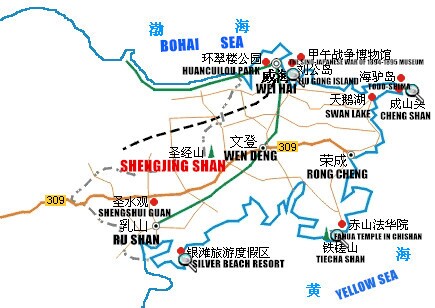Martijn Copman Belgium 29 <martijn.co...
2019-09-17 08:23:00

Shandong is situated in the eastern coastal region and in the lower reaches of the Yellow River. Furthermore Shandong is south of Beijing and north of Shanghai. Since it is located in the east of the Taihang Mountains, so it got its name: Shandong, which literally means "east of the mountains" in Chinese.
Historic Culture:
Shandong plays a significant role in Chinese civilization as it is the home of the philosophers Confucius and Mencius. Furthermore, Shandong has a long history as Dawenkou and Longkou Cultural sites, date back 4000-7000 years, further demonstrate the ancient culture of Shandong.
Climate:
Shandong has a temperate and monsoonal climate with four clearly distinct seasons. While it is hot and rainy in summer and cold and snowy in winter. Relatively speaking, spring and autumn are the golden seasons for traveling with pleasant temperature.
Places To Visit:
Shandong is not only famous for is time-honored history but also for its rich tourist attractions. These attractions include gorgeous natural landscapes, numerous historical and cultural sites. As well as being home to 7 national scenic spots, 7 noted historic and cultural cities and 1 historic and cultural village. Among them, Taishan Mountain in Tai’an and the Confucian Temple, Mansion and Cemetery of Confucius in Qufu have been listed on the China World Culture and UNESCO Natural Heritage Lists.
Jinan is the capital city of Shandong and has many fine attractions such as Baotu Spring, Damming Lake and Thousand Buddha Mountain, to name a few.
Weihai is a peaceful coastal city on the north of the Shandong peninsular. The city has many beautiful parks, shopping malls and areas of natural beauty. Attractions in Weihai include Liuongdao island, Weihai zoo and Huaxiacheng scenic area.
Yantai is also a coastal city and is located on the north of the Shandong peninsular. The city is larger than Weihai, but smaller than Qingdao. Yantai was the first city in China to make wine.The cities attractions include the beach, wine museum and many shopping malls.
Shandong is also known as "Qilu" because of the existence of the states of Qi and Lu During Spring and Autumn Period. People often describe Qilu culture by using "one mountain, one river, one saint". "One mountain" refers to Taishan Mountain. Taishan mountain is important in Qilu Culture, not only because of its magnificent scenery, but also because it is a tall mountain which has been central to Chinese culture throughout history. "One river" means the Yellow River. This is the cradle of Chinese civilization while Shandong is located at the end the Yellow River where it flows out to sea. The "One saint" refers to Confucius the ancient Chinese philosopher who greatly influenced Chinese culture, education and values,
Qingdao, a charming coastal city located on the south of the Shandong peninsular and is praised for its historic sites and natural beauty. The city is home to many German style buildings from the late 19th century and early 20th century and Laoshan mountain. It also holds an International Beer Festivals annually. Finally, when people visit Qingdao they also enjoy eating fresh seafood, drinking Tsingtao beer and enjoying a modern city.
Copyright ShengJing Shan Traditional Kung Fu School 2018. All Rights Reserved. Manager